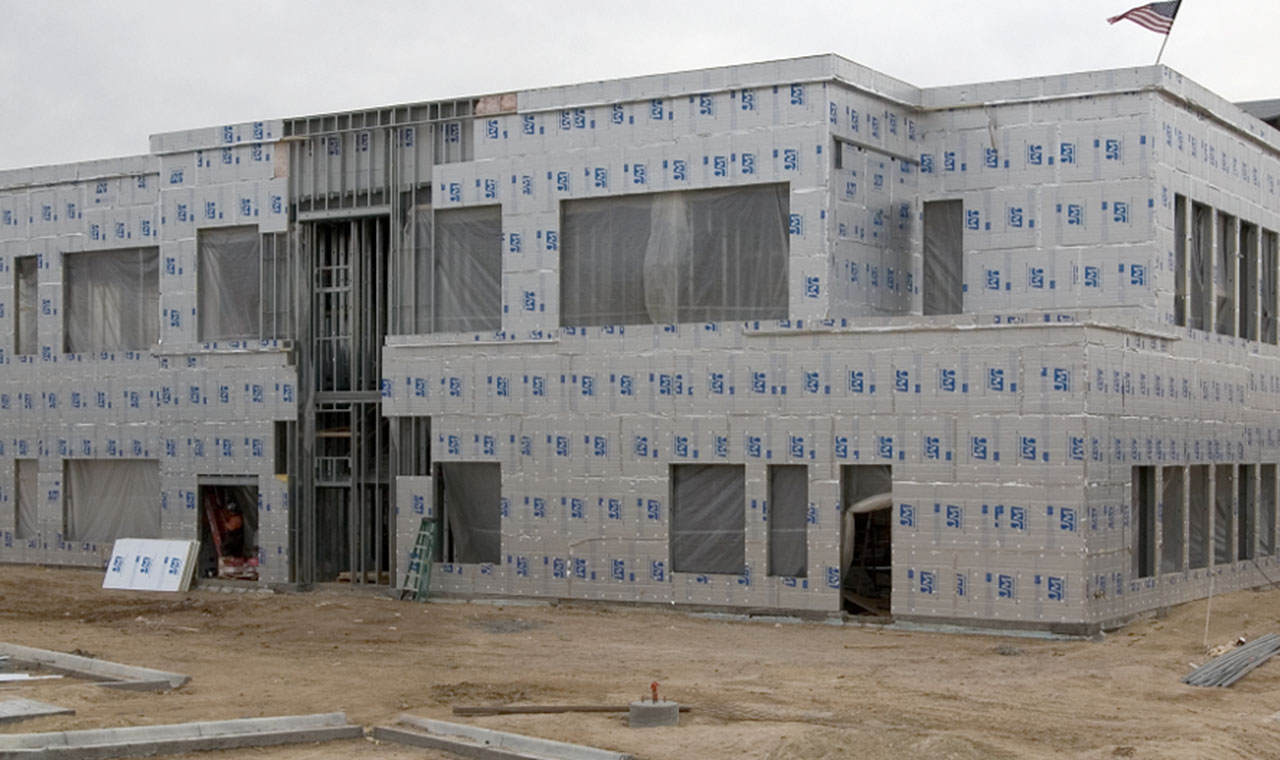As energy costs rise, it’s more important than ever to prevent heat from escaping by making our buildings more energy efficient. Greater energy efficiency can cut energy costs, reduce energy consumption, and ultimately help combat climate change.
Thermal bridging is a significant contributor to heat loss and energy inefficiency. In any building, there are components in the walls that allow heat to go around and through the insulation. These elements extend through the traditional insulation layer of the wall — for valid structural or mechanical reasons. Wood framing, metal framing, balconies, window frames and slabs can all become thermal bridges, draining heat away from the building interior.
In home construction, for example, wood framing makes up 20-25% of the total wall area. Because insulation can only be installed between the studs, only 75% of the house is actually insulated using traditional insulating techniques. Unless you make the walls of the home thicker, which would be impractical and expensive, there are not many options to increase the amount of insulation inside the walls. This is where continuous insulation comes in.
Continuous insulation provides an additional layer of insulation outside the home or building, helping to plug some of the gaps created by the 20-25% of the wall that isn’t insulated. Continuous insulation is like a big blanket around the building that helps contain the heat that would otherwise be lost through thermal bridging.
After the building is constructed and insulation is installed in the walls, a continuous insulation product is then added to the exterior. By adding this exterior layer, less energy is lost to the outside, helping to reduce energy costs.
Johns Manville provides several continuous insulation solutions that provide thermal efficiency along with exceptional air, water and vapor control:
AP™ Foil-Faced Foam Sheathing can be used as continuous insulation behind most wall systems such as stucco, brick and fiber cement.
CI Max® Foam Sheathing provides a continuous layer of insulation to reduce thermal bridging and improve energy efficiency.
JM CladStone® Water & Fire Block is a continuous insulation product that’s part of a National Fire Protection Association (NFPA) 285 compliant wall system that uses Aluminum Composite Materials (ACM) metal panels.
JM Corbond® Closed-Cell Spray Polyurethane Foam can be used as a continuous insulation. This product is also an all-in-one air barrier, vapor retarder, and water-resistive barrier.
To learn more about JM continuous insulation products, visit here.

